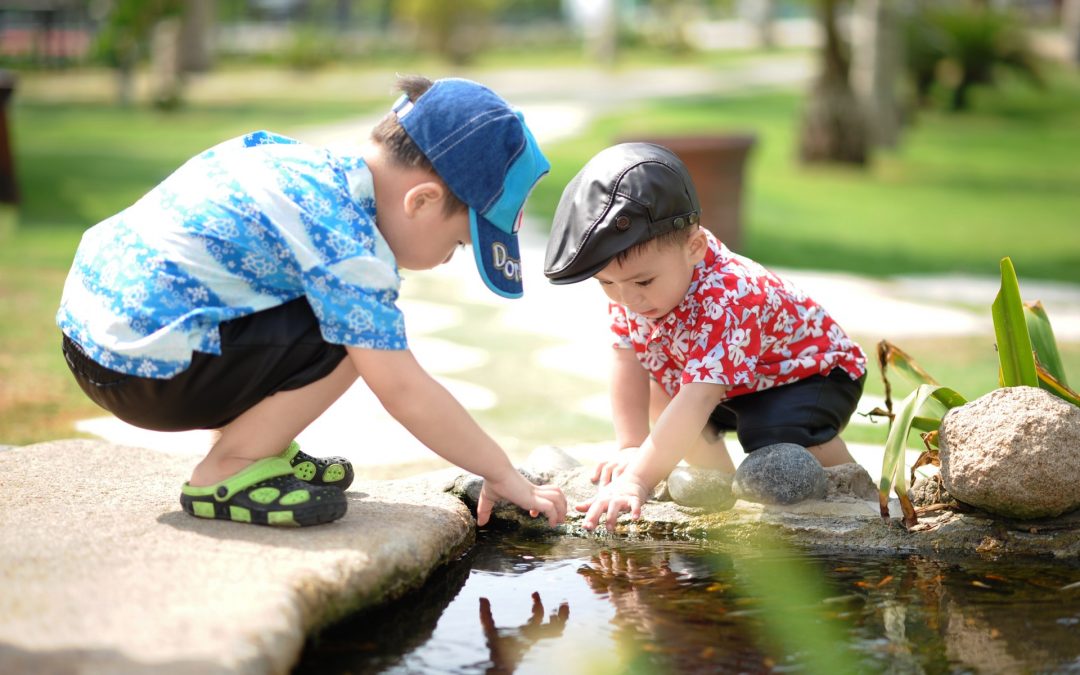How do you turn your child’s emotional meltdown into a teaching moment? You don’t have to be a zen master to use a mindful approach to supporting your preschooler’s social-emotional learning. You really just need to learn about communication styles that support a caring, nonjudgmental environment. Within this safe environment, your child can have the space to be aware of his or her feeling, learn to identify specific internal reactions, and learn how to manage emotions.
You can help your child be well adjusted, confident and compassionate at a very young age, sending them to their life experiences on a strong foundation of self awareness.The mindful communication habits you adopt now with your young children will result in more resilient and cooperative kids as they grow, and more of their day to day experiences are away from you, at school, activities and play dates. You will see their self- awareness blossom into other awareness.
There are things you can do to prepare for a transformation in your parenting communication style. Start with really getting how differentiating the feelings your child feels versus their behavior. Acknowledging their feelings helps your child feel safe and loved. That’s always step number one. You can get to the behavior later, unless it is harmful. But even then, there are peaceful ways to address a child’s negative behaviors.
In addition, be aware of the effects of cadence. Speak slower, in moderate tones. Make your high notes not so high and lows not so low. For example, when parents sound too cheery, it can rings false to children eroding their trust little by little. On the other end of the spectrum, when your voice sounds as a scolding tone, it can become frightening.
Finally think about adding the art of storytelling to your parenting repertoire. As parents and elders knew in past generations, a well timed story can really reach deeply into a child’s inner awareness, and become a beloved lifelong lesson. To be a great storyteller you definitely need to be nonreactive in the situation. This might seem difficult at first, but it is also a wonderful mindfulness training for you.
Below are some ideas for phrasing your communication to your child in ways that model compassion and support their social-emotional learning:
Instead of “Stop crying!”
- I’m sorry you are crying. Can you tell me what is making you cry?
- This is more helpful than asking why he or she is “sad,” because the child may be crying from anger or frustration.
In place of “Can you please stop shouting!”
- That was quite loud! What happened?
Sometimes your child might hit another child.Of course first make sure the other child is OK and separate them. How can you talk with the child who did the hitting?
- Your brother got hurt when you hit him.
- Be patient. Make sure the child can see you looking calm and concerned.
- During their explanation be fully listening and nonreactive. This immediately will calm the child.
Sometimes your child urgently insists on something they want or don’t want, for example, I want to go to the park right now. If this is not the time for the park. before “yes” or “no,” try the following.
- Gently reflect the child’s words back, without the emphasis or over excitement: You want to go to the park now.
- Wait for their reactions, and appropriately, respectfully reflect back their words
- Again, this will reduce the excitement and give your child space to think and consider when you say “no, we cannot right now” or explain when the trip to the park will be.
Overall, you are creating a space where it is peaceful, where your child has the opportunity to notice their feelings and express them. Over time, you will see how the expression of their feelings demonstrates their growing self-awareness.
Also to remain mindful, nonjudgmental and compassionate check in with your own feelings from time to time. If you empathize too much, you may get carried away by your child’s hurts or happiness and lose the opportunity for promoting emotional balance. Likewise, if you are annoyed or reject the child’s reactions, then you will just confuse the child. They will get overwhelmed trying to deal with you and with their own feelings.
When you practice compassionate communication with children, you may bring to the surface your own, perhaps buried experiences as a child. Allow this to happen, and even share some of your remembered feelings with your child when appropriate. This will make your words and teaching even more authentic to your child and bring you closer to each other.












I am an early childhood consultant and a very supportive of mindfulness practices for everyone particularly for young children. I have studied mindfulness and have taken training and courses at our university. I would like to have more info for younger children sent to me by email so I can help more parents to practice. Switching parents approach of dealing with children in the traditional way has been rather challenging. Thanks for all you do for children of our society so they can be more understanding and caring.